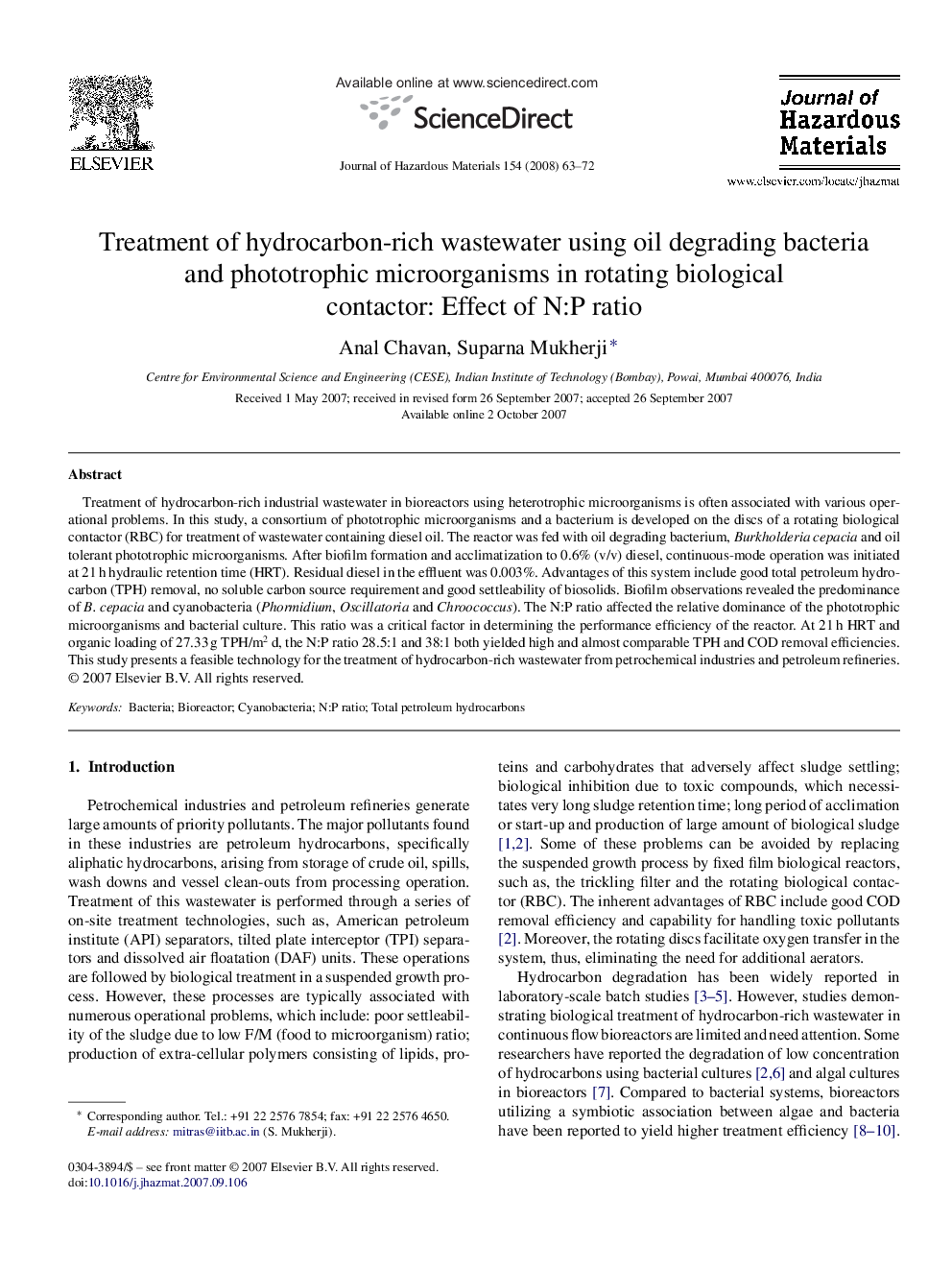| کد مقاله | کد نشریه | سال انتشار | مقاله انگلیسی | نسخه تمام متن |
|---|---|---|---|---|
| 583568 | 1453174 | 2008 | 10 صفحه PDF | دانلود رایگان |
عنوان انگلیسی مقاله ISI
Treatment of hydrocarbon-rich wastewater using oil degrading bacteria and phototrophic microorganisms in rotating biological contactor: Effect of N:P ratio
دانلود مقاله + سفارش ترجمه
دانلود مقاله ISI انگلیسی
رایگان برای ایرانیان
کلمات کلیدی
موضوعات مرتبط
مهندسی و علوم پایه
مهندسی شیمی
بهداشت و امنیت شیمی
پیش نمایش صفحه اول مقاله

چکیده انگلیسی
Treatment of hydrocarbon-rich industrial wastewater in bioreactors using heterotrophic microorganisms is often associated with various operational problems. In this study, a consortium of phototrophic microorganisms and a bacterium is developed on the discs of a rotating biological contactor (RBC) for treatment of wastewater containing diesel oil. The reactor was fed with oil degrading bacterium, Burkholderia cepacia and oil tolerant phototrophic microorganisms. After biofilm formation and acclimatization to 0.6% (v/v) diesel, continuous-mode operation was initiated at 21Â h hydraulic retention time (HRT). Residual diesel in the effluent was 0.003%. Advantages of this system include good total petroleum hydrocarbon (TPH) removal, no soluble carbon source requirement and good settleability of biosolids. Biofilm observations revealed the predominance of B. cepacia and cyanobacteria (Phormidium, Oscillatoria and Chroococcus). The N:P ratio affected the relative dominance of the phototrophic microorganisms and bacterial culture. This ratio was a critical factor in determining the performance efficiency of the reactor. At 21Â h HRT and organic loading of 27.33Â g TPH/m2Â d, the N:P ratio 28.5:1 and 38:1 both yielded high and almost comparable TPH and COD removal efficiencies. This study presents a feasible technology for the treatment of hydrocarbon-rich wastewater from petrochemical industries and petroleum refineries.
ناشر
Database: Elsevier - ScienceDirect (ساینس دایرکت)
Journal: Journal of Hazardous Materials - Volume 154, Issues 1â3, 15 June 2008, Pages 63-72
Journal: Journal of Hazardous Materials - Volume 154, Issues 1â3, 15 June 2008, Pages 63-72
نویسندگان
Anal Chavan, Suparna Mukherji,